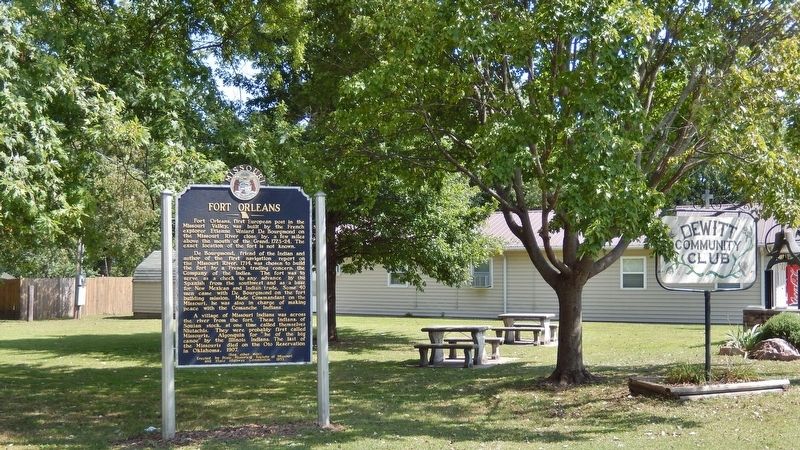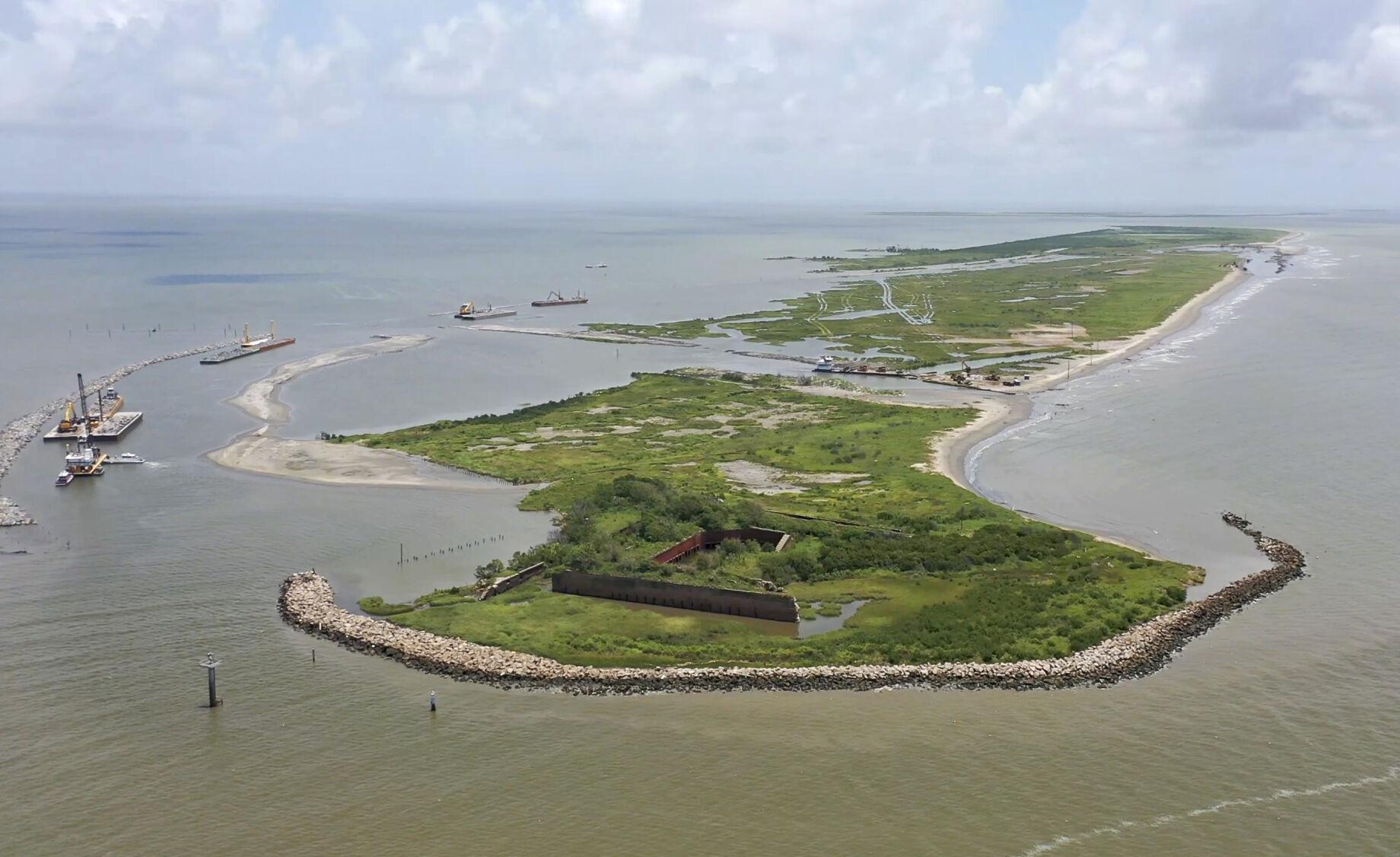
Where the River Remembers: The Elusive Legacy of Fort Orléans, Missouri
Along the serpentine embrace of the Missouri River, where currents whisper tales of forgotten eras, lies the ghost of a frontier outpost that once stood as the westernmost sentinel of French North America. Fort Orléans, established in 1723 near present-day Brunswick, Missouri, was a fleeting yet pivotal monument to ambition, diplomacy, and the relentless quest for empire. Its story is one of audacious exploration, complex intercultural relations, and a tenacious struggle against the wilderness, all now largely submerged beneath the shifting sands and waters of the mighty river that birthed and ultimately consumed it.
For nearly three centuries, the precise location of Fort Orléans remained a tantalizing mystery, a cartographic phantom for historians and archaeologists alike. It was a place of immense strategic importance, a beacon of French influence in a vast, untamed territory, yet its physical manifestation vanished with remarkable thoroughness. To understand its profound significance, one must delve into the swirling currents of 18th-century geopolitics and the remarkable, often contradictory, figure who brought it into being: Étienne de Veniard, Sieur de Bourgmont.
Bourgmont was no ordinary colonial officer. A man of contradictions, he was a seasoned coureur des bois, a renegade who had once deserted the French military and lived among Native American tribes, adopting their ways and fathering children with Indigenous women. His early career was marked by insubordination and a taste for adventure that often clashed with official decorum. Yet, it was precisely these qualities – his intimate knowledge of the land, his fluency in various Native languages, and his established relationships with powerful tribes like the Missouri, Osage, and Kansa – that made him indispensable to French ambitions.

By the early 1720s, France was keenly aware of the growing British presence pushing westward from the East Coast. To secure its claim over the immense Louisiana Territory, stretching from the Gulf of Mexico to the Canadian plains, a forward operating base was desperately needed. The Mississippi River was the main artery, but the Missouri River, leading into the heart of the continent, was the true frontier. The French Crown, specifically the Company of the Indies which then administered Louisiana, tasked Bourgmont with establishing a fort deep within this territory, primarily to foster trade, secure alliances with the Indigenous nations, and open a potential overland route to Spanish Santa Fe.
Bourgmont, despite his checkered past, was seen as the only man capable of such a mission. He was pardoned for his previous transgressions and elevated to the rank of Captain, entrusted with a grand vision of peace through trade and diplomacy. His objective was clear: pacify the tribes along the Missouri, particularly the bellicose Padoucas (ancestors of the Comanche), who often disrupted trade routes, and establish a permanent French presence.
In the spring of 1723, Bourgmont embarked on his ambitious journey up the Missouri River. With a contingent of soldiers, voyageurs, and craftsmen, he navigated the treacherous waters, finally selecting a site on the north bank of the river, likely near the mouth of the Grand River, in what is now Carroll County, Missouri. This location was strategically chosen for its fertile land, abundant game, and its proximity to several significant Native American villages, offering both defensive advantages and access to vital trade networks.
The construction of Fort Orléans was a monumental undertaking in the wilderness. It was a modest but formidable structure for its time and place: a palisaded enclosure of rough-hewn logs, likely a quadrangular design with bastions at each corner, housing a commandant’s quarters, barracks for soldiers, a storehouse for furs and trade goods, and a chapel. The fort was named in honor of Philippe II, Duke of Orléans, who served as Regent of France during the minority of Louis XV.
Life at Fort Orléans was undoubtedly harsh. The small garrison faced isolation, the relentless forces of nature, and the ever-present challenges of maintaining supply lines stretching thousands of miles back to New Orleans. Disease, accidents, and the occasional skirmish with hostile parties were constant threats. Yet, the fort thrived as a hub of activity. French traders exchanged muskets, gunpowder, beads, blankets, and iron tools for valuable beaver, otter, and deer pelts offered by the Missouri, Osage, Kansa, and Oto tribes. These exchanges were not merely economic; they were crucial acts of diplomacy, solidifying alliances and cementing French influence.
Bourgmont’s crowning achievement at Fort Orléans was not military, but diplomatic. In 1724, he led a remarkable expedition westward from the fort, traveling with a large retinue of French soldiers and allied Native American warriors. His destination was the villages of the Padouca, a powerful and often hostile tribe. Despite suffering from fever and logistical nightmares, Bourgmont persevered, ultimately reaching the Padouca and orchestrating a historic peace treaty. This Grand Council, held under a temporary shelter of hides, brought together representatives from numerous tribes – the French, the Kansa, the Oto, the Missouri, and the Padouca – in a rare display of intertribal unity and French diplomatic prowess.
To solidify these alliances and showcase the might and generosity of the French Crown, Bourgmont undertook an even bolder initiative: he invited several Native American chiefs to accompany him back to France. Imagine the astonishment of these tribal leaders as they journeyed from the remote Missouri wilderness to the opulent court of Louis XV at Fontainebleau. They were presented to the young king, attended operas, visited palaces, and were showered with gifts. This diplomatic spectacle was a resounding success, demonstrating France’s commitment to its new allies and sending a clear message to rival European powers.
However, the grand vision that Fort Orléans represented was as ephemeral as the river mists. Upon his return from France, Bourgmont was showered with honors and a noble title, but his attention shifted, and the immense cost of maintaining such a distant outpost began to weigh heavily on the Company of the Indies. The anticipated trade routes to Santa Fe proved more challenging than expected, and the immediate profits did not justify the continuous investment. By 1726, just three years after its establishment, Fort Orléans was officially de-garrisoned and abandoned. Some sources suggest a small presence may have lingered until 1728, but its primary function as a French military and diplomatic outpost had ceased.

The swift abandonment of Fort Orléans sealed its fate. Unlike more permanent settlements, its wooden structures were left to the elements. The Missouri River, a relentless architect and destroyer, began its work. Over the centuries, the river’s channel has shifted dramatically, often by miles, eroding vast tracts of land and depositing new ones. What was once the riverbank became farmland, or vice versa, burying the fort’s remnants deep beneath layers of silt, sand, and sediment, or washing them away entirely. The precise memory of its location faded from human recollection, becoming a local legend, a historical footnote that few could pinpoint on a map.
For centuries, the precise location of Fort Orléans remained a tantalizing mystery, a holy grail for Missouri archaeologists and historians. The quest intensified in the late 20th and early 21st centuries. In the 1990s, the Missouri Department of Natural Resources acquired a parcel of land in Carroll County, designating it the "Fort Orléans State Historic Site," based on historical research and local lore suggesting it was a strong candidate. However, this designation was more aspirational than definitive.
Extensive archaeological investigations have been conducted over the years, employing ground-penetrating radar, magnetometry, and traditional excavation techniques. The challenges are immense: the sheer size of the potential search area, the deep alluvial deposits from centuries of flooding, and the destructive power of the river itself. While various artifacts consistent with 18th-century French occupation have been unearthed – gunflints, pottery sherds, glass beads, metal fragments – no definitive structural evidence of the fort’s palisade or buildings has been conclusively identified at the state historic site.
This ongoing archaeological enigma only deepens the allure of Fort Orléans. It reminds us that history is not always neatly preserved in stone, but often hidden, buried, or washed away by the very forces that shaped it. The quest for Fort Orléans is a testament to the enduring human desire to connect with the past, to unearth the tangible evidence of stories that have become almost mythical.
Today, the Fort Orléans State Historic Site offers interpretive signs and a scenic overlook of the Missouri River, inviting visitors to imagine the bustling frontier outpost that once stood there. It serves as a symbolic marker, a place to reflect on the audacity of early European exploration and the complex tapestry of interactions between French, Spanish, and Native American cultures that defined the early American West.
Fort Orléans stands as more than just a footnote in history; it is a powerful symbol. It represents the fleeting nature of empire, the profound impact of intercultural exchange, and the relentless power of nature to reclaim what once was. It reminds us that Missouri was not merely a gateway to the West, but a crucial crossroads where global powers vied for influence, and where Indigenous nations navigated a rapidly changing world.
The elusive ghost of Fort Orléans continues to haunt the banks of the Missouri River. While its exact physical remains may forever be hidden beneath the shifting sands, its story endures – a testament to a pivotal moment when a small, forgotten fort laid the groundwork for the future of a vast continent, whispering its tales through the ceaseless currents of time. And somewhere, perhaps, the river still remembers.


